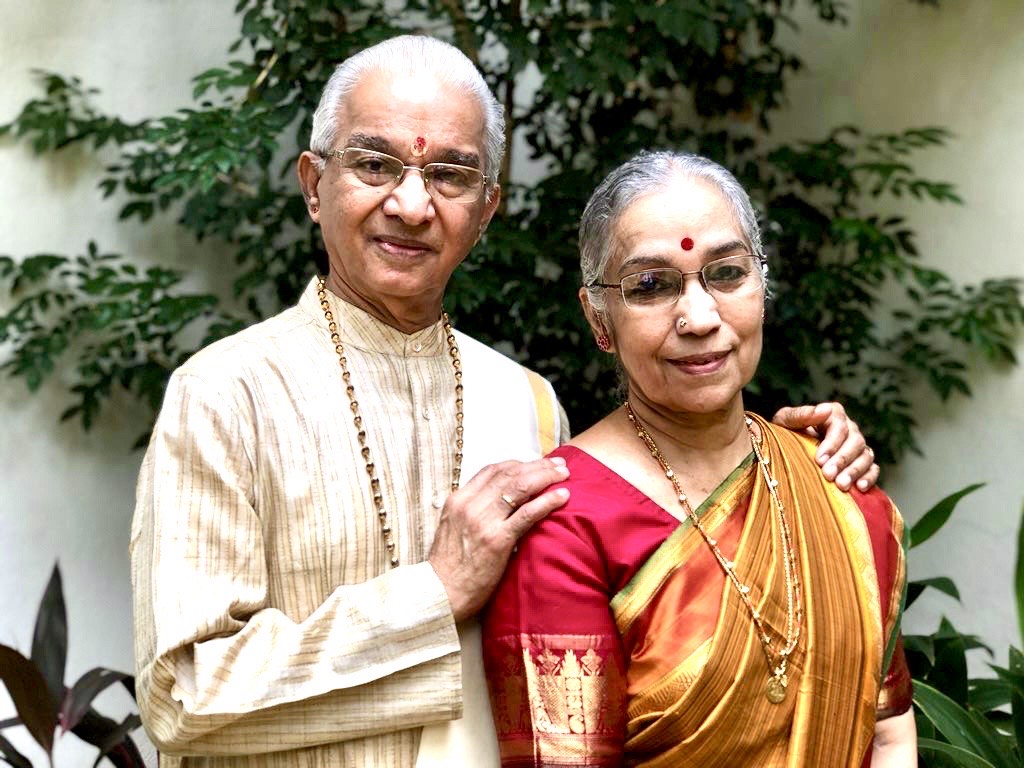Past, Forward
In our Portrait section this month, veteran Bharatanatyam exponent, VP Dhananjayan from Chennai, talk to us about his Natyam and his association with all things Apsaras Arts




You have been associated with Apsaras Arts for a while now. What are some of your first thoughts when it comes to the work that Apsaras Arts has been doing?
We (The Dhananjayans) have been associated with Apsaras Arts right from the inception of the institution in the year 1977. The founders of Apsaras Arts, Neila and Sathyalingam used to invite us to conduct Abhyasa saala for their students and teach our special repertoire for their student’s Arangetrams.
For their granddaughter’s Arangetram, we were asked to compose a special repertoire suitable for a child of 9-10 years. We composed a Nrityopahaaramon Srikrishna (Guru Rajee Narayanan’s Kalyani Varnam) on Satyajit, who was also a teenager then. He went to Singapore along with Shanta and taught that item to the child.
A couple of Apsaras students were sent to Bharatakalanjali Chennai to train for their Arangetram. Since we have had a close bond with them right from the Kalakshetra days, we have mutually benefited a lot in our growth, as successful professionals.
In terms of ensemble productions, you have such a rich experience. What according to you are the crucial qualities that make an ensemble production shine and standout?
Both Neila and Sathyalingam had a very liberal attitude and approach to artistic endeavours. They helped SIFAS (Singapore Indian Fine Arts Society), a pioneering cultural centre in Singapore in widening their horizon to group productions. On the advice of Neila and Sathyalingam, SIFAS commissioned us – thorough the Singapore government – to produce a mega group production for the South East Asian International Art Festival in 1984-85. Neila and Sathyalingam were instrumental in bringing the artistes fraternity together and established a spirit of camaraderie among the arts fraternity in Singapore.
Under their guidance, SIFAS brought students and professionals from different institutions under one umbrella. After auditioning and selecting artistes we trained more than a hundred participants. Bharatakalanjali’s magnum opus production was re-created as a mega group production for the Singapore International Art festival.
This was the beginning of group productions initiated by Apsaras Arts for SIFAS, and later they went on to continue their own group activities interacting with artistes from India, especially from Chennai.
What according to you is the role of costume, lighting and technology in the context of ensemble productions. You have had the privilege of working as part of Anjaneyam and playing a crucial part in it. How was that experience and what were your key takeaways and learnings?
In the four Abhinayas mentioned in the Naatya Shastra- Aangika(physical), Vaachika(verbal or vocal), Aahaarya(costume & stage) and Sathvika(finer expressions) – costume plays a very important role. Aahaarya includes stagecraft, characteristic make-up and external aesthetics enhancing the presentation without jeopardizing or compromising the quality of the other three aspects of Abhinaya.
In our genuine opinion, technology could be judiciously employed only for visual enhancement but not to be distractingly overloaded. Especially in Naatya(dance drama), only artistically designed suggestive motives may be appropriate for our kind of idiom, where emphasis is given on body and facial expressions and emotions.
My colleague, late Balagopalan and I were invited as guest artistes to participate in Anjaneyam, a mind-blowing production that was a learning experience for me, artistically and technologically. It was a magical broadway kind of presentation never found or experienced in our motherland Bhaarat.
You have also been a part of Apsaras Arts’s DIAP and IPAC. Why do you think, as an artiste that lec-dems and presentations are very crucial for the student of the arts?
IDAP and IPAC are dedicated ventures benefiting the students community, across the world, who are interested in Naatya and the allied subjects that facilitate them to interact with stalwarts in the fields of the arts. It was a great idea for Apsaras Arts to collaborate with Australian universities and making their students contribute to preserve, popularise and propagate the values of our Bharateeya Kala and its Samskriti. No one has ever attempted to venture into such service- riented online sessions. Kudos to Aravinth, the brain behind it.
You have also had a long association with Apsaras Arts’. Neila Maami and her husband; can you share a bit about the bond that you all shared?
Satyalingam Anna was a fastidious disciplinarian with total commitment to whatever he undertook and he expected others also to adhere to discipline, devotion and dedication. Sometimes it was very hard to keep pace with his meticulousness. Even Neila Akka found it difficult to do so, with her soft and accommodative nature.
She had no pride and prejudice about differences in style, and invited artistes from various disciplines with an open heart and passed on the same trait to her students as well, including Aravinth, a fine musician himself who is continuing the legacy of this great couple Neila and Sathyalingam. Actually speaking, they are instrumental in making Singapore a cultural hub of Southeast Asia. They were visionaries far ahead of their times.









